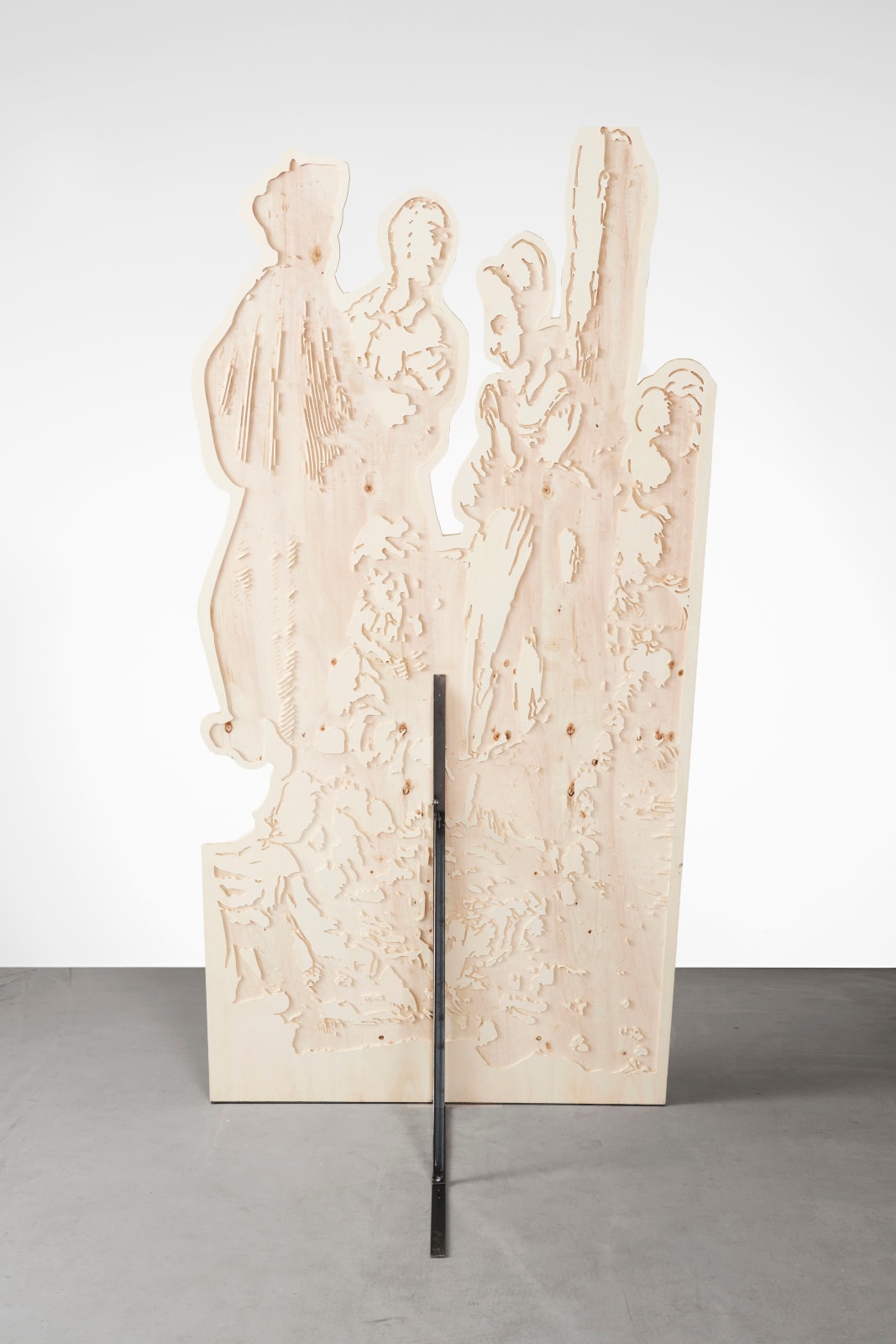-
Artworks
Open a larger version of the following image in a popup: Installation view. Impossible Songs, Jester, Genk, 2024. Courtesy the artist and Jester. Ph: Van den Bussche-Vanden Bossche.
Installation view. Impossible Songs, Jester, Genk, 2024. Courtesy the artist and Jester. Ph: Van den Bussche-Vanden Bossche.
Mikołaj Sobczak
Sylvin Rubinstein, 2024In collaboration with Tom Alon
Oil, print on wood, disassembled metal stand250 x 122 x 100 cm
98.4 x 48 x 39.4 inches
B-MSOBCZAK-.24-0026Further images
Recto: Sylvin Rubinstein was a flamenco dancer of Jewish descent, born either in 1914 or 1917. In the early 1930s, he saw great success on European stages with his twin...Recto: Sylvin Rubinstein was a flamenco dancer of Jewish descent, born either in 1914 or 1917. In the early 1930s, he saw great success on European stages with his twin Maria, as the duo Imperio and Dolores. After successfully escaping the Warsaw Ghetto, they received help from a German major named Werner, who remembered their performances and encouraged Sylvin to join the resistance movement to help hide Jewish children and engage in sabotage activities. According to his recollections, he threw grenades into a restaurant frequented by Nazi soldiers during one of his actions dressed as a woman. He stayed in Werner’s Berlin apartment until the end of the war, and in the 1950s, he started performing on German cabaret stages as Dolores, commemorating his sister who was murdered in Treblinka.
Sylvin is painted dancing as he would in one of his later shows, while his portrait is taken from a photo of him as a young man.
Verso: Maria van Beckum (to the right on the pyre) and her sister- in-law Ursula van Beckum (the woman on the left, who is being held), both Anabaptists are burnt at the stake, by Jan Luyken, from the "Martyrs Mirror", 1685.Exhibitions
Mikołaj Sobczak, Le Boudoir de l'Amour, Capitain Petzel, Berlin, 2024
"Mikolaj Sobczak. Le Boudoir de L'Amour", Capitain Petzel, 2024.
"Mikolaj Sobczak. Impossible Songs", Jester | Flanders Arts Institute, Genk, 2024.1of 2









